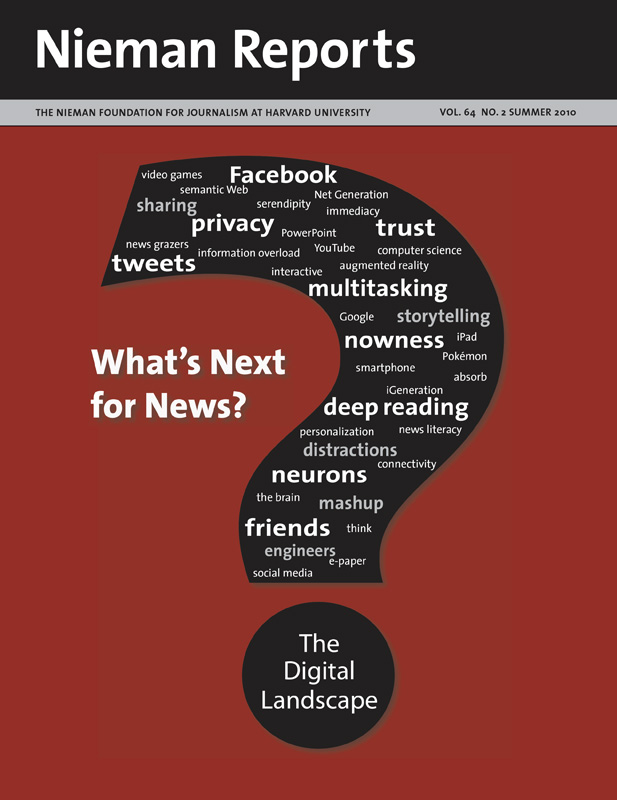RELATED ARTICLE
“News-Focused Game Playing: Is It a Good Way to Engage People in an Issue?”
– Nora Paul and Kathleen A. Hansen What we learned in our Knight News Challenge grant project Playing the News informs the way we teach our journalism students. While incorporating Web story design and structure into reporting and writing classes is imperative, it isn’t enough to simply translate story content into formats that allow for interactivity. We need to enlist student journalists in inventing digital story forms that take full advantage of the Web in ways that provide the context that people want.
To do this, build in at least one assignment in which students create a topic-organized page of content to guide readers through the complexities of an issue or coverage of an ongoing controversy. This exercise helps students develop valuable synthesizing skills as they create topic categories that will shed light on the major points or themes that connect stories across time. This requires higher-order thinking that instructors shouldn’t assume students already have. The ability to take a bird’s-eye view of multiple stories over a period of time and find a way to make sense of them is crucial—and challenging.
Think, too, about asking students to brainstorm about story-focused games designed for a news Web site. This will tap into the experiences of these digital natives who have a much more tenuous connection to news stories told in traditional ways. Many of our Playing the News participants were attracted to the board-style game as a way of connecting to news so this format might be worth pursuing to convey certain types of information.
There could be no one better to create and test such news games than those whose peers are part of the audience that news organizations want to attract. At the University of Minnesota School of Journalism and Mass Communication, we teach a course called Convergence Journalism. Our students use contemporary digital tools to learn about and experiment with various news story forms and storytelling strategies.
In the content analysis exercise, students are assigned readings and required to complete a content analysis of news to demonstrate their understanding of the topic of the week. To complete this assignment students organize news content in a coherent way and create categories that accurately and effectively describe the threads of news reporting. The obvious next step is for students to create a topic-organized Web page that could guide people through content that has appeared over time in coverage of a topic in the news.
Even in our school’s basic reporting and writing classes, students learn the strengths and weaknesses of telling stories using different forms and with various tools. When they pitch a story idea, they are asked to describe the form they think will work best to tell the story. A blog? Slideshow? A Google map? What is likely to be the best way to guide readers into and through a story and engage them with its content? Perhaps traditional text will work best. Or a combination of forms might be tried with various story elements presented in different ways.
As storytelling forms evolve, we want journalism students to be on the front lines of experimentation. Yet we also want them to know the value of gathering information about what works as they evaluate their options.


